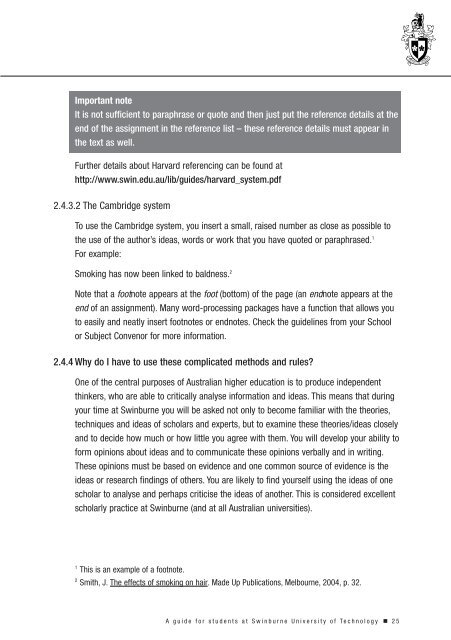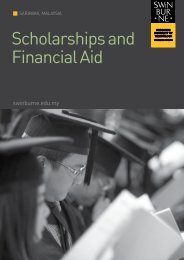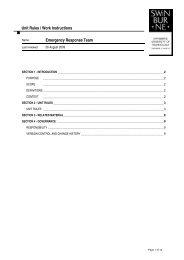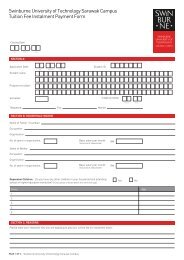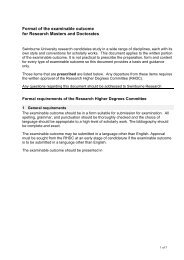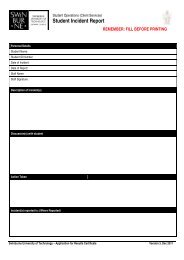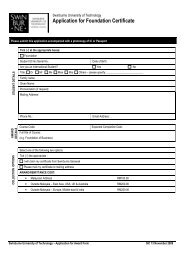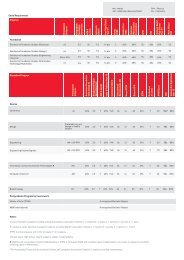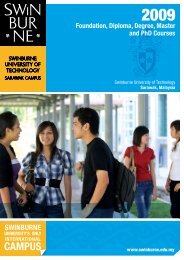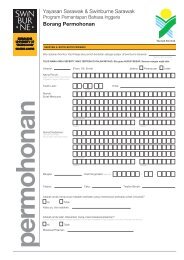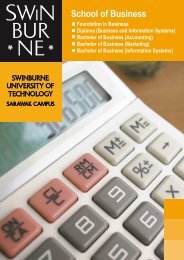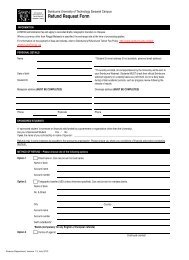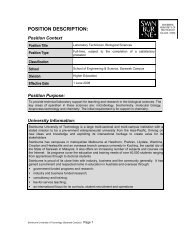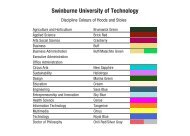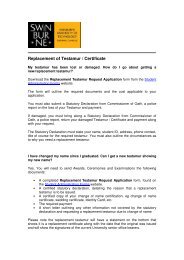Plagiarism Guide - Swinburne University of Technology
Plagiarism Guide - Swinburne University of Technology
Plagiarism Guide - Swinburne University of Technology
- No tags were found...
Create successful ePaper yourself
Turn your PDF publications into a flip-book with our unique Google optimized e-Paper software.
Important noteIt is not sufficient to paraphrase or quote and then just put the reference details at theend <strong>of</strong> the assignment in the reference list – these reference details must appear inthe text as well.Further details about Harvard referencing can be found athttp://www.swin.edu.au/lib/guides/harvard_system.pdf2.4.3.2 The Cambridge systemTo use the Cambridge system, you insert a small, raised number as close as possible tothe use <strong>of</strong> the author’s ideas, words or work that you have quoted or paraphrased. 1For example:Smoking has now been linked to baldness. 2Note that a footnote appears at the foot (bottom) <strong>of</strong> the page (an endnote appears at theend <strong>of</strong> an assignment). Many word-processing packages have a function that allows youto easily and neatly insert footnotes or endnotes. Check the guidelines from your Schoolor Subject Convenor for more information.2.4.4 Why do I have to use these complicated methods and rules?One <strong>of</strong> the central purposes <strong>of</strong> Australian higher education is to produce independentthinkers, who are able to critically analyse information and ideas. This means that duringyour time at <strong>Swinburne</strong> you will be asked not only to become familiar with the theories,techniques and ideas <strong>of</strong> scholars and experts, but to examine these theories/ideas closelyand to decide how much or how little you agree with them. You will develop your ability t<strong>of</strong>orm opinions about ideas and to communicate these opinions verbally and in writing.These opinions must be based on evidence and one common source <strong>of</strong> evidence is theideas or research findings <strong>of</strong> others. You are likely to find yourself using the ideas <strong>of</strong> onescholar to analyse and perhaps criticise the ideas <strong>of</strong> another. This is considered excellentscholarly practice at <strong>Swinburne</strong> (and at all Australian universities).1This is an example <strong>of</strong> a footnote.2Smith, J. The effects <strong>of</strong> smoking on hair. Made Up Publications, Melbourne, 2004, p. 32.A guide for students at <strong>Swinburne</strong> <strong>University</strong> <strong>of</strong> <strong>Technology</strong> ■ 25


